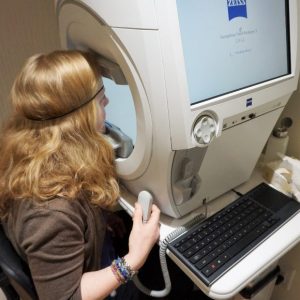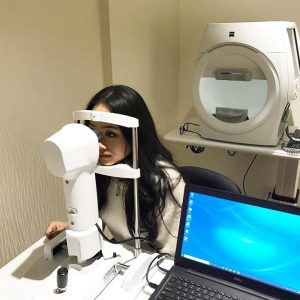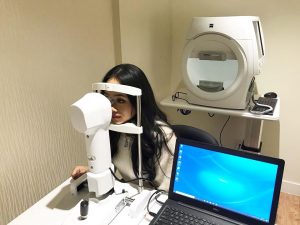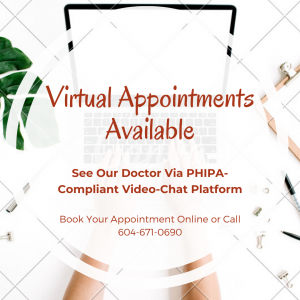Our Services
What We Do
Our Services
- Comprehensive Eye Exams
- Children′s Eye Exam
- Contact Lens Exam
- Treatment of Eye Disease and Ocular Emergency
- Technology - Advanced Eye Care
- Laser Eye Surgeries Co-Management (Lasik/PRK)
- Myopia Control/Ortho-K
- TeleHealth For Optometry
By conducting routine comprehensive eye exams, with years of experience in diagnosing and treating such typical vision disorders as nearsightedness, farsightedness, amblyopia, presbyopia, cataracts, macular degeneration and diabetic retinopathy, our doctor and her team are equipped to provide appropriate refractive and therapeutic medical eye care, including prescribe refractive eyeglass and contact lens prescriptions.
At the same time, the team offers a wide array of the very best, highest-quality eye care products at reasonable prices. Our patients never pay more than necessary for the best quality in eyeglasses, contact lenses, sunglasses, progressive and bifocal lenses.
Early detection of children’s vision problems is essential to make sure your kids have the visual skills they need to do well in school, sports and other activities.
Vision plays a crucial role throughout childhood and beyond. In fact, experts say 80 percent of what children learn in school is presented visually.
To make sure your child’s eyes are functioning properly during the early formative years, schedule his or her first eye exam with an optometrist or ophthalmologist at 6 months of age. Otherwise, a lifetime of poor vision in one or both eyes could occur.
Moving into the preschool and school-age years, parents face a new set of concerns: first eye exam, does the child require vision correction , will the vision worsen over time, or improve; what type of eyeglasses are recommended, what if the child won’t wear his glasses; are contact lenses an option, possible leaning-related vision problem, and how computer use can affect a child’s eyes. Those concerns can all be addressed at a routine eye exam. Starting at age two, with fast development in early childhood, children’s vision could change rapidly as well. We recommend routine eye exam minimum once a year.
Parents of school-age children should be informed about vision correction options, such as using contact lenses instead of glasses to control nearsightedness and protective sports eyewear.
Eye exams for contact lenses include special tests that typically are not performed in routine eye exams for eye exam.
If you are interested in contacts, or you already wear them and want to have your contact lenses updated, it will be helpful that you inform when you schedule your appointment for an eye exam. This will ensure your exam includes extra time for us to perform additional tests needed for a proper contact lens fitting or prescription update.
After we completed the routine exam, we will gather additional information so you can be fitted with contact lenses. We may help you explore the type of contact lenses that provides optimal eye health, and suits you the best depending on your lifestyle and preferences regarding contact lenses, such as daily or monthly disposable.
Some time after age 40, people will develop a condition known as presbypia that decreases your ability to read small print and focus on near objects. To correct presbyopia, we may offer you the choice of multifocal contact lenses. Another option is monovision, which is a special contact lens fitting technique where one eye is corrected for distance vision and the other eye is corrected for near vision.
If patients are diagnosed with an eye disease such as eye infection, eye injury, glaucoma, macular degeneration, you want the best treatment available to get your eyes healthy again. At Olympic Village Eye Care, we offer only the best.
We manage the majority of primary eye care and medical eye care. We also manage and co-manage many common eye diseases and conditions, (example: glaucoma, diabetic retinopathy, dry eye syndrome, red eye, anterior uveitis, etc.). Based on your diagnosis, we may recommend a wide variety of approaches, the doctor here may prescribe topical medications such as prescription eye drops to treat eye infections, anterior uveitis, and glaucoma. We are also skilled in removing foreign bodies from your eyes in office, so you can avoid the long wait time at the local hospital’s emergency room.
When our patients require tertiary care and surgical management, we refer and co-manage with ophthalmologist. When systemic conditions are suspect, we will also co-manage medical cases with other medical specialists including internal medicine, emergency medicine, neurology, rheumatology, dermatology, pediatrics, oncology, and radiology.
In our continued efforts to bring the most advanced technology to our patients, Olympic Village Eye Care is equipped with the following cutting edge devices to assess your eyes.
Digital Retinal Imaging
Digital retinal imaging simply takes a digital picture of the back of your eye, giving your doctor a more detailed view. It is fast, easy and comfortable. The Retinal Camera helps identify and detects the presence of disease in your eyes. These retinal images are a great asset to your medical record as they allow your eye doctor to make important comparisons of potential problems which may develop into complications down the road.
Detecting the early signs of diseases is an important step toward offering early treatment and management to prevent symptoms from worsening. The use of high-resolution retinal imaging can lead to early detection of the following diseases and provide visual evidence of the changes that occur in patients’ eyes over time due to these conditions.
- Glaucoma
- Age-Related Macular Degeneration
- Retinal Detachment
- Diabetic Retinopathy
- High Blood Pressure
- Cancer
Visual Field Testing
Visual field tests are used to detect blind spots (scotomas) and other visual field defects, which can be an early sign of diseases such as glaucoma, retinal abnomalities, optic neuropathy, brain tumors and stroke. The standard test focuses on the central 30 degrees of your visual field, as this is where a majority of issues arise. Repeated visual field testing is an inexpensive and non-invasive way to manage neurological diseases, as this technology can quickly analyze long-term changes in your visual function.
We are equipped with the newest technology in automated perimetry, the Humphrey Field Analyzer from Zeiss. Zeiss is a German based brand and a world leader in automated perimetry technology. This new model provides a streamlined and faster approach to visual field testing for enhanced patient comfort.
This device measures a patient’s response to light stimulation in an enclosed environment and maps their peripheral vision for scotomas, or blind spots.
Patients with suspected or diagnosed visual conditions may receive MSP coverage for this exam. To qualify, you must be a BC resident and present a valid BC Care Card.

Corneal Topography (Corneal Mapping)
Corneal topography is a computer assisted diagnostic tool that creates a three-dimensional map of the surface curvature of the cornea (the front window of the eye). Computerized corneal topography can be beneficial in the evaluation of certain diseases and injuries of the cornea including:
- Keratoconus: Early screening of keratoconus suspects is one of the most useful roles of topography. In cases with established keratoconus, the role of topography is paramount for monitoring progression and doing a timely collagen cross linking, and in contact lens fitting.
- Refractive surgery: To screen candidates for normal corneal shape, patterns and ruling out suspicious or keratoconic patterns .
- Post surgery astigmatism: Irregular astigmatism following corneal transplants and postoperative cataract extraction with acquired astigmatism can be studied with the topographer.
- Effect of corneal and ocular surface disorders: Disorders such as pterygium, localised corneal scars can cause a change in the corneal topography and thus the monitoring is very useful.
- Other uses : Contact lens fitting, monitoring of ocular vs corneal wavefront.

Dr. Chen has extensive experience in the pre-operative evaluation and post-operative care of Laser refractive correction procedure and cataract surgeries.
In LASIK, PRK, laser energy reshapes the curvature of the eye’s clear front surface (cornea) to alter the way light rays enter the eye. Artificial lenses surgically inserted into the eye also can refocus light rays to sharpen vision. We will evaluate your eyes and discuss your visual goals to help determine if you are an appropriate candidate for LASIK, PRK or Cataract Refractive Technology. If you have appropriate goals and there are no complications for the procedure, our doctors can perform pre- and post-operative care for patients who wish to undergo laser eye surgery. We will be happy to discuss your candidacy and the various refractive surgery options that will best suit your lifestyle and needs. Dr. Chen works closely with surgeons at various laser surgery centres to ensure we provide proper post-operative care for you in the comfort of our office.
Cataract surgery can now be considered a vision correction procedure. It involves removing a cloudy natural lens and replacing it with an artificial lens of a different shape, thus reduce or eliminate refractive errors and increase contrastivity. During the evaluation of your eye health we will carefully examine your lens for signs of cataract formation. If a cataract is noticed and the clouding is causing visual disruption, our doctor will refer you to a trusted and respected surgeon for surgery. Our Eye Care Practice will be there for you providing pre and post cataract surgery care. After cataract surgery, the implanted lens provide good distance vision without the need of glasses. However, your near vision may still be blurry and require reading glasses. We will evaluate your vision about four weeks after cataract surgery to see if you need glasses to maximize your distance and near vision.
Myopia is a common disorder, affecting approximately 30% of the Canadian population. The global prevalence of myopia is expected to increase from 27% in 2010 to 52% of the world’s population by 2050. High amounts of myopia will not only require thick, corrective eyeglasses, they are also associated with an increased risk of sight-threatening problems, such as retinal detachment, choroidal degeneration, cataracts, and glaucoma. Slowing the progression of myopia could potentially benefit many children.
Our doctors can now offer a number of treatments that may be able to slow the progression of myopia. These treatments can induce changes in the structure and focusing of the eye to reduce stress and fatigue associated with the development and progression of nearsightedness.
Currently, four types of treatment are showing promise for controlling myopia such as Ortho-k Lenses, atropine eye drops, multifocal contact lenses, multifocal eyeglasses. Out of all the options, Ortho-K is the most advanced medical device for myopia control.
What is Ortho-k
Orthokeratology, or ortho-K, is a non-surgical, reversible process using a unique therapeutic mold to reshape the cornea while you sleep. This procedure is the fitting of specially designed, gas permeable contact lenses that you wear overnight. During the time you are asleep, the lenses gently reshape the cornea (front surface of your eye) so you are able to see clearly the next day without the use of daytime contacts or glasses. It is an excellent mode of treatment for myopia control for children and an alternative to refractive surgery (LASIK or PRK) for adults.
How it works
Our doctor uses an instrument called a corneal topographer to map and measure the surface of your cornea then design a lens especially for your eye. The machine doesn’t touch your eye, and there is no pain. The corneal topography map shows our doctor the shape and curves of your cornea. The lenses work by flattening the center of the cornea, changing how light is bent as it enters the eye. Most orthokeratology lenses are worn overnight to flatten the cornea, then removed during the day. These overnight lenses are rigid, gas-permeable lenses that are sturdy enough to reshape the cornea, but also allow oxygen through so your eye stays healthy.
When ortho-k lenses are removed the cornea stays flattened for a while and vision is corrected without the need for glasses. If you stop wearing the lenses at night, your eyes will eventually go back to their original shape and the refractive error will return. You have to keep wearing the lenses regularly to keep the vision correction.
What are the advantages of Ortho-K
1. To slow down the progression of childhood myopia. Several research studies showed the progression of nearsightedness among children wearing ortho-k lenses for myopia control was roughly half that of those who received no myopia control treatment over a two-year period. In other words, even if orthokeratology is discontinued after several years, the amount of myopia that returns tends to be less severe than what the person would be expected to have if they had worn eyeglasses or regular contact lenses as a child rather than wearing the ortho-k lenses.
2. To correct refractive errors (mainly nearsightedness, but also astigmatism and hyperopia). Ortho-K can also be prescribed to correct presbyopia in some cases. Children and young adults who do not want to wear glasses but are too young for laser eye surgery or are not good candidates for other types of surgery (for example, have dry eyes) are often better candidates for Ortho-K. This treatment is also a good option for people who participate in sports or work in dusty environments as contact lenses can pose problems for these types of activities.

During the global pandemic, telehealth is emerging as an effective and sustainable solution for precaution, prevention to stem the spread of COVID-19. Telehealth is bridging the gap between patients and the doctor, enabling everyone to stay at home and communicate with our doctor through virtual channels, helping to reduce the spread of the virus.
Our Vancouver doctors are committed to being there for you during this time, and we are proud to announce that we are now seeing patients for essential or emergent eye care via our Telehealth platform. You may schedule a virtual appointment to see our doctor for red eyes, eye pain, allergies, styes and other urgent issues via a PHIPA-Compliant Video-Chat Platform, for both new established patients. Feel free to call our office or book your appointment online.


